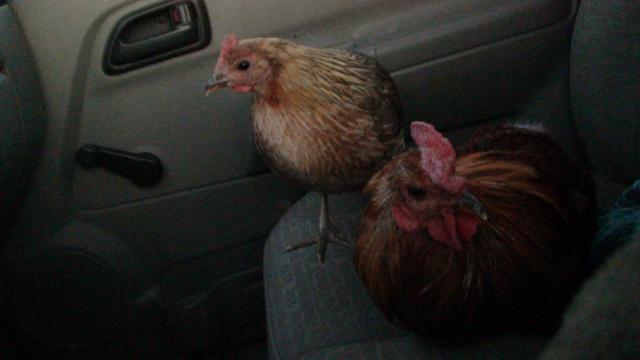- Thread starter
- #11
Quote:
Did not actually put them in, rather trained them to go in on their own. They had been taken on multiple such rides to get them use to stressor. Motorcycle / scooter is something they spend time around every day so it was a known they used as cover at display site. Once birds settled in scooter was removed. Was very important since birds had to be calm enough to retrieve at end of day. Birds were effectively free range on site where they had to interact with public. Carrier was a bit tight for rooster's tail as made evident in photographs.
Did not actually put them in, rather trained them to go in on their own. They had been taken on multiple such rides to get them use to stressor. Motorcycle / scooter is something they spend time around every day so it was a known they used as cover at display site. Once birds settled in scooter was removed. Was very important since birds had to be calm enough to retrieve at end of day. Birds were effectively free range on site where they had to interact with public. Carrier was a bit tight for rooster's tail as made evident in photographs.


